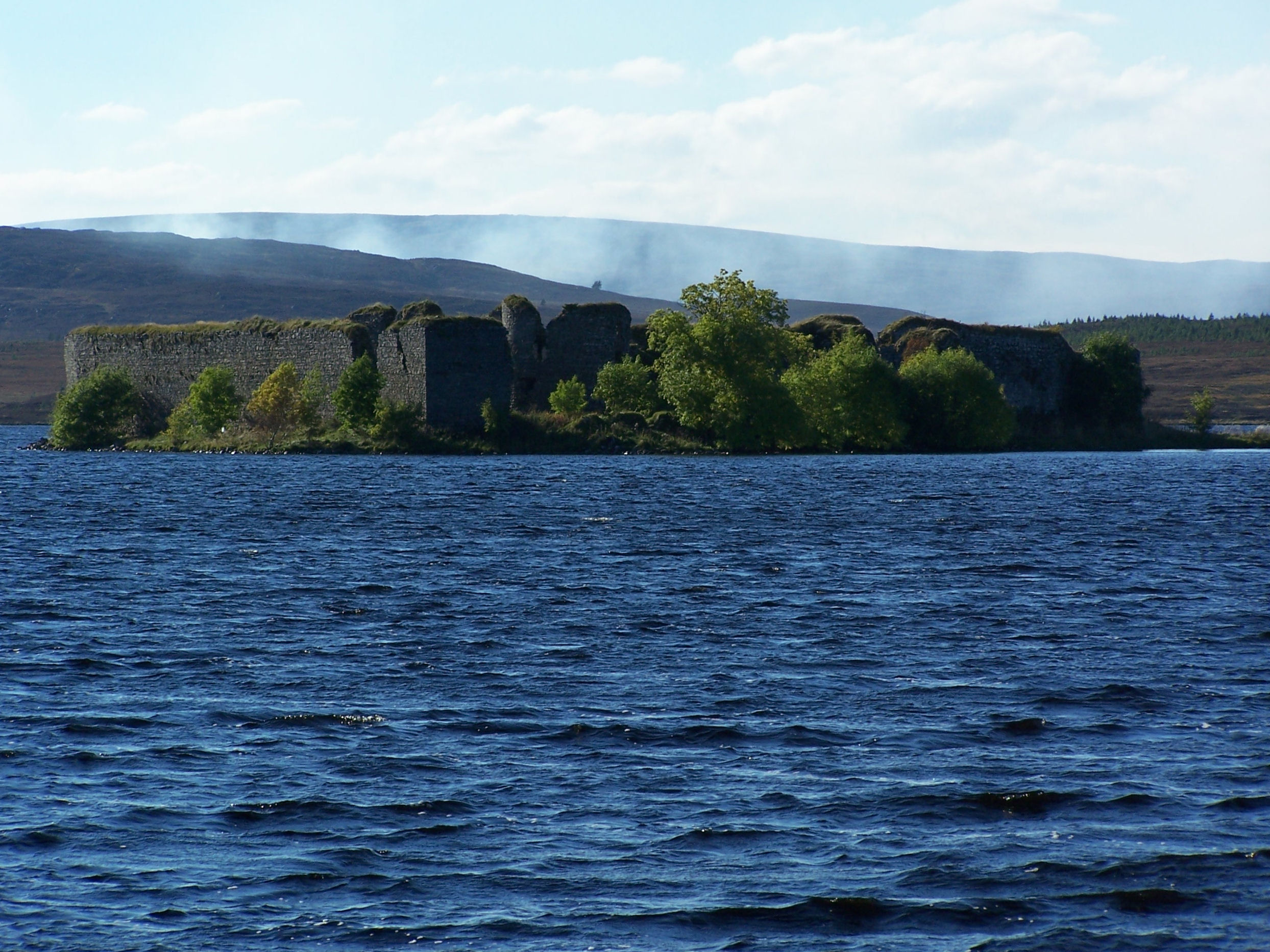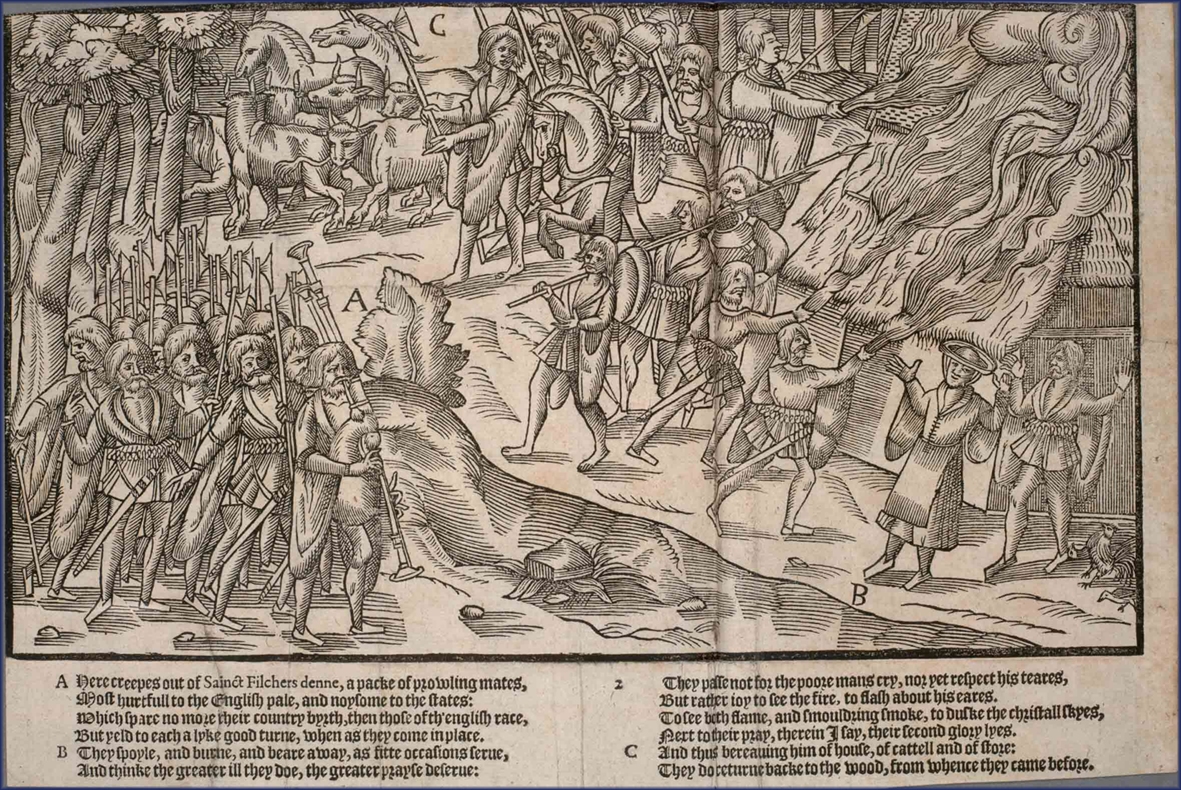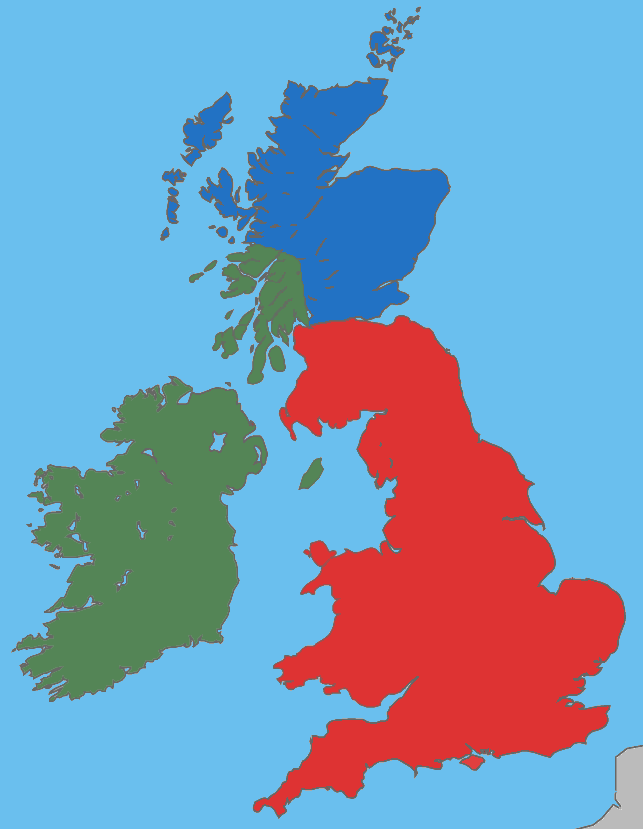|
Cateran
The term cateran (from the Gaelic ''ceathairne'', a collective word meaning "peasantry") historically referred to a band of fighting men of a Scotland Highland clan; hence the term applied to the Highland, and later to any, marauders or cattle-lifters. An individual member is a ceithernach or catanach, but Walter Scott calls an individual a cateran (e.g. in '' Rob Roy'', '' Chronicles of the Canongate''). According to Randy Lee Eichoff it derives from Old Celtic 'cat' (battle, war) and 'nach' (man, fellow) Catanach means war-man, warrior. Its plural is ceithern or ceithrenn or caithereine or kettering or kettenring and several other spellings. They are mentioned in the Dunkeld Litany: Magnus Magnusson states that some Highland chieftains retained substantial private armies of professional soldiers, known as 'ceatharn', to be used against their neighboursMagnusson, Magnus (2000) ''Scotland, The Story of a Nation'', page 211 Problems arose when the third royal son of King R ... [...More Info...] [...Related Items...] OR: [Wikipedia] [Google] [Baidu] |
Cateran Trail
The Cateran Trail is a circular long-distance walking route in central Scotland. The trail has no official beginning or end and can be joined at any stage. The route was established, way-marked and is now maintained by, the Perth & Kinross Countryside Trust. A variety of terrain is covered by the trail including farmland, mountains and forest. The path itself follows old drovers' roads, minor paved roads and farm tracks and can be walked in 4 or 5 days. It is now designated as one of Scotland's Great Trails by NatureScot. As of 2018 it was estimated that around 8,000 people were using the trail each year. Route The Cateran Trail is typically walked in 5 stages, with the stopping points being determined by the availability of accommodation and the walker's fitness. Generally, the trail is started at Blairgowrie and the clockwise direction is taken towards Kirkmichael, Spittal of Glenshee, Kirkton of Glenisla then Alyth. Throughout the walk, the path is well marked. Some w ... [...More Info...] [...Related Items...] OR: [Wikipedia] [Google] [Baidu] |
Alexander Stewart, Earl Of Buchan
Alexander Stewart, Earl of Buchan, called the Wolf of Badenoch (1343 – July 1394), was a Scottish royal prince, the third son of King Robert II of Scotland by his first wife Elizabeth Mure. He was Justiciar of Scotia and held large territories in the north of Scotland. He is best remembered for his destruction of the royal burgh of Elgin and its cathedral. His sobriquet was given due to his notorious cruelty and rapacity, but there is no proof that it was used during his lifetime. Power and influence Known in charters as Alexander ''Senescalli'' (Latin for Steward), first noted when, on 14 August 1370, he issued letters patent from Ruthven Castle undertaking to grant protection to the Bishop of Moray and all of his lands, men and property in Badenoch. His father, Robert the Steward, had acquired the lands of Badenoch probably from Euphemia, Countess of Moray who had become his second wife. Robert had a petulant relationship with his uncle, King David II of Scotland.S. I. ... [...More Info...] [...Related Items...] OR: [Wikipedia] [Google] [Baidu] |
Kern (soldier)
A kern was a Gaelic warrior, specifically a light infantryman, in Ireland in the Middle Ages. Etymology The word ''kern'' is an anglicisation of the Middle Irish word ''ceithern'' or ''ceithrenn'' meaning a collection of persons, particularly fighting men. An individual member is a ''ceithernach''. The word may derive from a conjectural proto-Celtic word *''ketern''ā, ultimately from an Indo-European root meaning a chain. Kern was adopted into English as a term for a Gaelic soldier in medieval Ireland and as '' cateran'', meaning 'Highland marauder', 'bandit'. The term ''ceithernach'' is also used in modern Irish for a chess pawn. Military roles Kerns notably accompanied bands of the mercenary gallowglasses as their light infantry forces, where the gallowglass filled the need for heavy infantry. This two-tier "army" structure though should not be taken to reflect earlier Irish armies prior to the Norman invasions, as there were more locally trained soldiers filling va ... [...More Info...] [...Related Items...] OR: [Wikipedia] [Google] [Baidu] |
The Wounded Cateran By R
''The'' is a grammatical article in English, denoting nouns that are already or about to be mentioned, under discussion, implied or otherwise presumed familiar to listeners, readers, or speakers. It is the definite article in English. ''The'' is the most frequently used word in the English language; studies and analyses of texts have found it to account for seven percent of all printed English-language words. It is derived from gendered articles in Old English which combined in Middle English and now has a single form used with nouns of any gender. The word can be used with both singular and plural nouns, and with a noun that starts with any letter. This is different from many other languages, which have different forms of the definite article for different genders or numbers. Pronunciation In most dialects, "the" is pronounced as (with the voiced dental fricative followed by a schwa) when followed by a consonant sound, and as (homophone of the archaic pronoun ''thee' ... [...More Info...] [...Related Items...] OR: [Wikipedia] [Google] [Baidu] |
Goidelic Languages
The Goidelic ( ) or Gaelic languages (; ; ) form one of the two groups of Insular Celtic languages, the other being the Brittonic languages. Goidelic languages historically formed a dialect continuum stretching from Ireland through the Isle of Man to Scotland. There are three modern Goidelic languages: Irish ('), Scottish Gaelic ('), and Manx ('). Manx died out as a first language in the 20th century but has since been revived to some degree. Nomenclature ''Gaelic'', by itself, is sometimes used to refer to Scottish Gaelic, especially in Scotland, and therefore is ambiguous. Irish and Manx are sometimes referred to as Irish Gaelic and Manx Gaelic (as they are Goidelic or Gaelic languages), but the use of the word ''Gaelic'' is unnecessary because the terms Irish and Manx, when used to denote languages, always refer to those languages. This is in contrast to Scottish Gaelic, for which "Gaelic" distinguishes the language from the Germanic language known as Scots. In Englis ... [...More Info...] [...Related Items...] OR: [Wikipedia] [Google] [Baidu] |
Scotland
Scotland is a Countries of the United Kingdom, country that is part of the United Kingdom. It contains nearly one-third of the United Kingdom's land area, consisting of the northern part of the island of Great Britain and more than 790 adjacent Islands of Scotland, islands, principally in the archipelagos of the Hebrides and the Northern Isles. To the south-east, Scotland has its Anglo-Scottish border, only land border, which is long and shared with England; the country is surrounded by the Atlantic Ocean to the north and west, the North Sea to the north-east and east, and the Irish Sea to the south. The population in 2022 was 5,439,842. Edinburgh is the capital and Glasgow is the most populous of the cities of Scotland. The Kingdom of Scotland emerged as an independent sovereign state in the 9th century. In 1603, James VI succeeded to the thrones of Kingdom of England, England and Kingdom of Ireland, Ireland, forming a personal union of the Union of the Crowns, three kingdo ... [...More Info...] [...Related Items...] OR: [Wikipedia] [Google] [Baidu] |
Scottish Highlands
The Highlands (; , ) is a historical region of Scotland. Culturally, the Highlands and the Scottish Lowlands, Lowlands diverged from the Late Middle Ages into the modern period, when Scots language, Lowland Scots language replaced Scottish Gaelic throughout most of the Lowlands. The term is also used for the area north and west of the Highland Boundary Fault, although the exact boundaries are not clearly defined, particularly to the east. The Great Glen divides the Grampian Mountains to the southeast from the Northwest Highlands. The Scottish Gaelic name of ' literally means "the place of the Gaels" and traditionally, from a Gaelic-speaking point of view, includes both the Western Isles and the Highlands. The area is very sparsely populated, with many mountain ranges dominating the region, and includes the highest mountain in the British Isles, Ben Nevis. During the 18th and early 19th centuries the population of the Highlands rose to around 300,000, but from c. 1841 and for th ... [...More Info...] [...Related Items...] OR: [Wikipedia] [Google] [Baidu] |
Banditry
Banditry is a type of organized crime committed by outlaws typically involving the threat or use of violence. A person who engages in banditry is known as a bandit and primarily commits crimes such as extortion, robbery, kidnapping, and murder, either as an individual or in groups. Banditry is a vague concept of criminality and in modern usage can be synonymous with gangsterism, brigandage, marauding, terrorism, piracy, and thievery. Definitions The term ''bandit'' (introduced to English via Italian around 1776) originates with the early Germanic legal practice of outlawing criminals, termed ''*bamnan'' (English ban). The legal term in the Holy Roman Empire was ''Acht'' or '' Reichsacht'', translated as " Imperial ban". In modern Italian, the equivalent word "bandito" literally means banned or a banned person. The New English Dictionary on Historical Principles (NED) defined "bandit" in 1885 as "one who is proscribed or outlawed; hence, a lawless desperate marauder, a ... [...More Info...] [...Related Items...] OR: [Wikipedia] [Google] [Baidu] |
Cattle Raiding
Cattle raiding is the act of stealing live cattle, often several or many at once. In Australia, such stealing is often referred to as duffing, and the perpetrator as a duffer.Baker, Sidney John (1945) ''The Australian language : an examination of the English language and English speech as used in Australia'' Angus and Robertson, Ltd., Sydney, p. 32, In other areas, especially in Queensland, the practice is known as poddy-dodging with the perpetrator known as a poddy-dodger. In North America, especially in the Wild West cowboy culture, cattle theft is dubbed rustling, while an individual who engages in it is a rustler. Historical cattle raiding The act of cattle-raiding is quite ancient, first attested over seven thousand years ago, and is one of the oldest-known aspects of Proto-Indo-European culture, being seen in inscriptions on artifacts such as the Norse Golden Horns of Gallehus and in works such as the Old Irish '' Táin Bó Cúailnge'' ("Cattle Raid of Cooley"), ... [...More Info...] [...Related Items...] OR: [Wikipedia] [Google] [Baidu] |
Rob Roy (novel)
''Rob Roy'' is an 1817 historical novel by Walter Scott, one of the Waverley novels. It is probably set in 1715, the year of the first Jacobite rising, and the social and economic background to that event are an important element in the novel, though it is not treated directly. The depiction of Rob Roy bears little relation to the historical figure: "there are two Rob Roys. One lived and breathed. The other is a good story, a lively tale set in the past. Both may be accepted as ‘valid', but they serve different needs and interests." Frank Osbaldistone narrates the story. He is the son of an English merchant who parted from his family home in the north of England near the border with Scotland when he was a young man, being of different religion and temperament than his father or younger brother. Frank is sent by his father to live at the long unseen family home with his uncle and his male cousins, when he refuses to join his father's successful business. In exchange, his fat ... [...More Info...] [...Related Items...] OR: [Wikipedia] [Google] [Baidu] |
Chronicles Of The Canongate
''Chronicles of the Canongate'' is a collection of stories by Sir Walter Scott, published in 1827 and 1828 in the Waverley novels series. They are named after the Canongate, in Edinburgh. * 1st series (1827): ** 'Chrystal Croftangry's Narrative' ** 'The Highland Widow' ** 'The Two Drovers' ** ''The Surgeon's Daughter'' * 2nd series (1828): ** ''St Valentine's Day'', or, ''The Fair Maid of Perth'' Composition After his financial ruin at the beginning of 1826, Scott committed himself to writing works that would produce funds for the Trustees of James Ballantyne & Co., including the massive ''Life of Napoleon''. However, he retained the right to produce less substantial works for his own benefit, and the first result was the collection of shorter fiction known as ''Chronicles of the Canongate''. This was in two volumes, rather than the three occupied by most of the Waverley Novels, and its disparate nature meant that it would not interfere with his official writing project. The firs ... [...More Info...] [...Related Items...] OR: [Wikipedia] [Google] [Baidu] |
Dunkeld Litany
Dunkeld (, , from , "fort of the Caledonians") is a town in Perth and Kinross, Scotland. The location of a historic cathedral, it lies on the north bank of the River Tay, opposite Birnam. Dunkeld lies close to the geological Highland Boundary Fault, and is frequently described as the "Gateway to the Highlands" due to its position on the main road and rail lines north. Dunkeld has a railway station, Dunkeld & Birnam, on the Highland Main Line, and is about north of Perth on what is now the A9 road. The main road formerly ran through the town, however following the modernisation of this road it now passes to the west of Dunkeld. Dunkeld is the location of Dunkeld Cathedral, and is considered to be a remarkably well-preserved example of a Scottish burgh of the late seventeenth and early eighteenth centuries. Around twenty of the houses within Dunkeld have been restored by the National Trust for Scotland. The Hermitage, on the western side of the A9, is a countryside prop ... [...More Info...] [...Related Items...] OR: [Wikipedia] [Google] [Baidu] |






